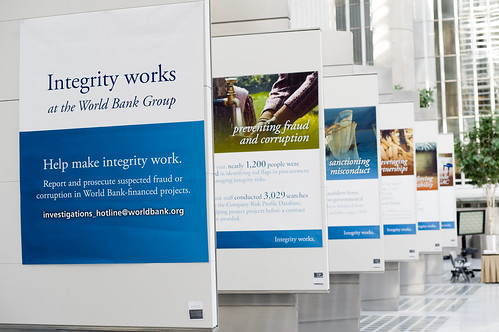The Moral Dimensions of Corruption

In our earlier blogs on corruption we have looked at the causes and
consequences of corruption within the process of economic development.
In our last blog, Six Strategies to Fight Corruption,
we addressed the question of what can be done about it, and discussed
the role of economic policies in developing the right sorts of
incentives and institutions to reduce its incidence. This blog will
provide some thoughts on the moral dimensions of corruption.
In his erudite and all-encompassing study of bribery through the ages, Noonan (1984, p. 700)
observes that “the common good of any society consists not only in its
material possessions but in its shared ideals. When these ideals are
betrayed, as they are betrayed when bribery is practiced, the common
good, intangible though it be, suffers injury.” Bribery and
corruption—however much the experts may wish to disguise them in the
language of costs and benefits and economic choices—have a moral
dimension. We ignore it at our own risk and at considerable cost to
society in terms of the effectiveness of measures taken to limit or
ameliorate their corrosive effects. Noonan gives several reasons to
support the thesis that bribery has a strong moral dimension. By now, it
has been criminalized in virtually every country in the planet,
although enforcement of the laws condemning it may be weak. As we have
seen, corruption itself may have weakened the state and its capacity to
punish violations of the law, but there is little ambiguity that bribery
is regarded everywhere as a perversion, hence the need for secrecy, for
deception, and the use of euphemisms (gifts, contributions) by the
guilty when it explodes into the open.
Bribery interacts with power. He who is willing to pay the most will be
granted the exemption, will shut out the competitor, will gain the
advantage. A plutocracy, a world in which wealth and money rule, is not a
system likely to capture the popular imagination. Bribers understand
this, and for that very reason they do not advertise their actions and
are condemned to act behind the scenes, on the margins of legality and
morality. Of course, bribery and corruption are betrayals of trust.
Noonan (p. 704)
puts it elegantly when he says: “the social injury inflicted by
breaches of trust goes beyond any material measurement. When government
officials act to enrich themselves they act against the fabric on which
they depend, for what else does government rest upon except the
expectation that those chosen to act for the public welfare will serve
that welfare?” Equally important, bribery and corruption are deeply at
odds with the moral basis of most of the world’s great religions, which
have often provided the moral underpinnings of the modern state, as is
clear, for instance, by reading the U.S. Constitution and other such
founding documents.
In many of the measures discussed in previous blogs
aimed at combating corruption, the underlying philosophy is one of
eliminating the opportunity for corruption by changing incentives, by
closing off loopholes and eliminating misconceived rules that encourage
corrupt behavior. If, for instance, the budget is formulated, approved
and executed in an environment of clear rules and transparent
procedures, it is far less likely to be a mechanism for abuse and
personal enrichment. But an approach that focuses solely on changing the
rules and the incentives, accompanied by appropriately harsh punishment
for violation of the rules, is likely to be far more effective if it is
also supported by efforts to buttress the moral and ethical foundation
of human behavior. A strategy in the struggle against corruption that is
based solely on the design of better rules and harsher punishment for
offenders is likely to be expensive and inefficient: expensive because
of the need to build an infrastructure of enforcement that is credible
and which catches and deals with offenders, but inefficient because it
immediately pits the regulators/enforcers against the offenders in a
cat-and-mouse game. And we have seen that the mice are often
well-equipped to win, because the stakes are so high and the cat
(regulator) is underpaid, overstretched, and outsmarted. The 2008-2009
global financial crisis revealed huge gaps in the regulation of the
“shadow” banking system (hedge funds, investment banks, other
off-balance sheet vehicles), but also showed that poorly-paid regulators
are no match for the creativity of bankers willing to stretch the rules
in an effort to disguise reality and boost short-term profits.
This means that in the long-term perspective, anticorruption strategies
have to be supported by moral education and the strengthening of the
ethical principles underpinning society. Appropriate policies and the
right sorts of incentives may, in the end, go some way in addressing the
problem of corruption but may in many places not be enough. This may
mean reinforcing the civic responsibility component of secular
education. It may require religious leaders—who bear such heavy
responsibility for the decline of religion as a force for social
cohesion—to set aside narrow doctrinal differences and return to the
spiritual roots of their respective faiths to revitalize their ability
to lead individuals and societies to a stronger identification with the
spiritual rather than the material dimension of human nature. In
particular, it will involve partnerships with all the organizations and
social forces that have a strong ethical foundation. In a society with
stronger ethical standards, the struggle against corruption will gain a
new source of strength that will complement the progress made in recent
years in improving the legal framework designed to combat bribery and
corruption.


